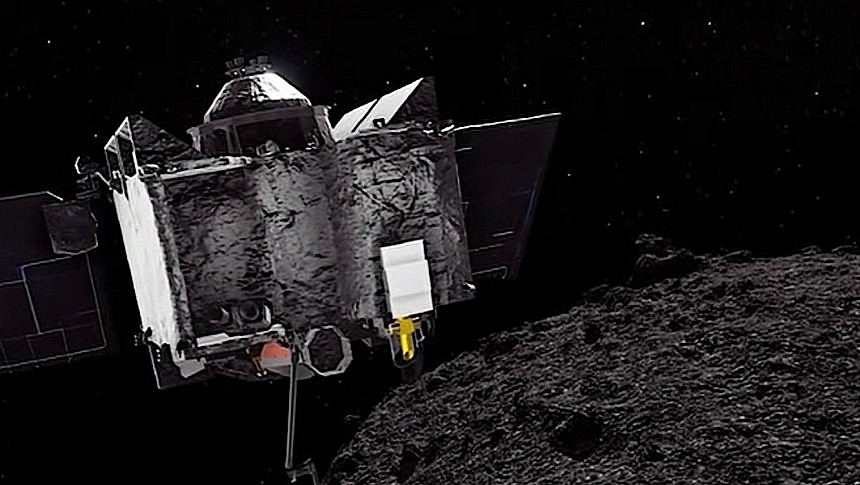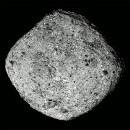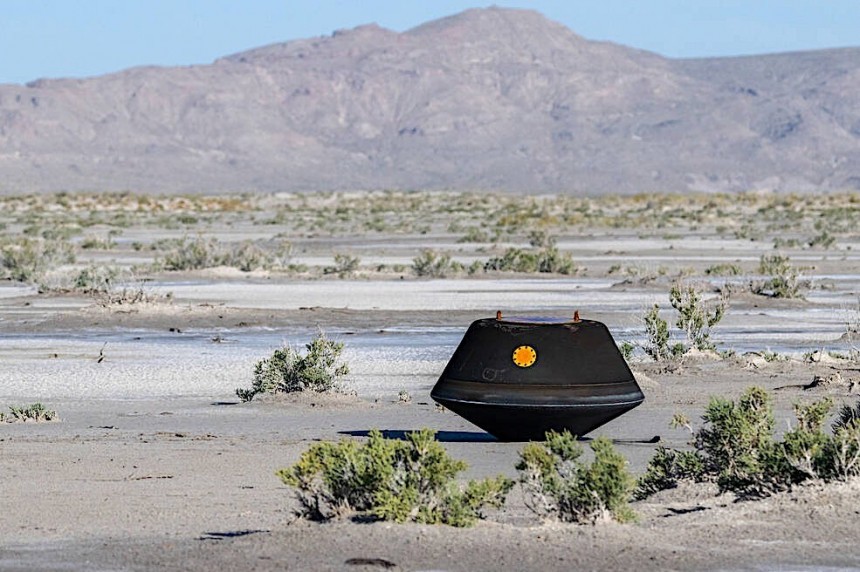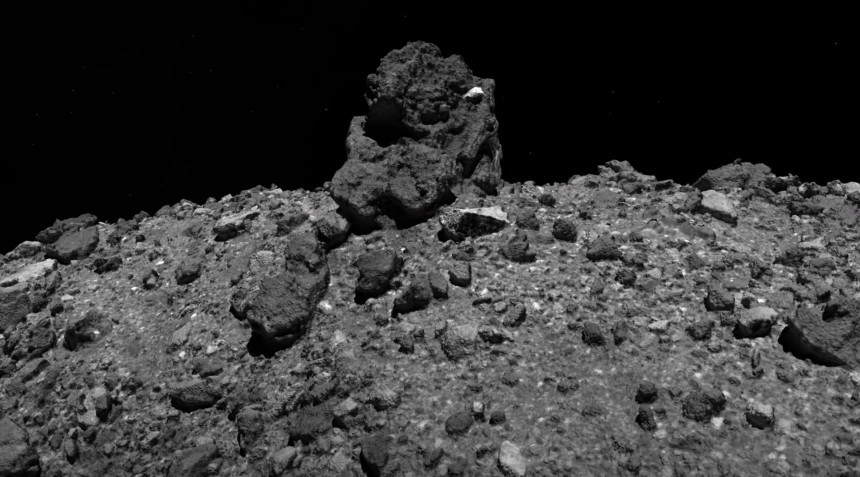If you think finding your way on Earth without help from Google Maps or Waze is difficult, just think about what that's like for people planning missions in space. Luckily, as technology progresses, even they seem to be getting access to more and better solutions.
Space navigation is complicated business, and requires planners to define the trajectory that needs to be taken to the target, constantly monitor a spacecraft's position on that trajectory, and maneuver to correct it if it's not.
It sounds easy, but you do have to consider space is a very dynamic place where everything is moving. Unlike an address here on Earth that will always be in the same place, a destination in space will be in an entirely different place than it was when the journey to it began. Then you have the huge distances to account for, comms issues, the influence of celestial bodies' gravity, and so on.
As it stands, NASA is using the Deep Space Network antennas to always know where its spacecraft are, and issue course corrections. Radio signals are used to calculate location, speed, and distance from Earth.
But there's another solution on the table that could prove to essential to unlocking incredible, new space navigation opportunities. It's called GIANT, and it has already been put to the test during the recently returned OSIRIS-REx mission.
GIANT stands for Goddard Image Analysis and Navigation Tool, and it is basically an optical navigation software. That's right, it uses images snapped by cameras, lidar, and other sensors to find the best way forward, kind of like we humans do when we use our eyes to see where we're going.
Simply put, GIANT only needs a picture of the target to be able to determine distance, the mass and center of a spinning object, and even identify landmarks on the surface of a celestial body. Three-dimensional maps of potential landing zones can also be generated, complete with potential hazards.
During the OSIRIS-REx mission the system was not used as the primary navigation tool, but it did serve as backup. In this capacity it was used to double-check the primary system's solutions. It was also used to determine the trajectory of particles coming up from the asteroid's surface and assess the potential dangers they posed to the ship itself.
Now that OSIRIS-REx is over, the team behind GIANT is working hard at improving the software. To do that, an open-source version for public use was released. Also, a simplified version called cGIANT has been paired with the Goddard autonomous navigation, guidance, and control software.
The plan is to make this optical navigation method commonplace in space exploration. It could be used for both small and large space missions, and for both robotic and crewed spacecraft. Even rovers destined for the Moon, Mars, or elsewhere, be them autonomous or human-operated, could make use of future GIANT versions.
The team behind the project can easily imagine a future when spacecraft equipped with an onboard and autonomous optical navigation system can simply look at stars, the Sun, and other objects in the solar system to know where it is and where it is heading. Based on that data, it could even make course corrections.
Such an approach would also have other advantages. For one, just think that planning the trajectory of a mission like OSIRIS-REx would take at least three months, whereas GIANT could do the work in about a week.
Furthermore, there will be a lot less data needed to move back and forth between Earth and the spacecraft, thus reducing cost – an important criteria, especially when it comes to small missions. The number of ground teams who would have to be involved in orbit determination and navigation would also be reduced.
At the time of writing NASA is looking at ways to "use GIANT to process some Cassini data." It hopes that in doing so it would advance its understanding of the interaction between Saturn and its moons.
As for OSIRIS-REx, the mission officially ended on September 24, 2023, when a capsule brought down to the surface of our planet bits and pieces of the distant asteroid.
Work on studying the samples has already begun, and the most recent update from NASA on the subject pointed to Bennu having an abundance of carbon-rich material and water-bearing clay minerals.
By all accounts, this makes the sample the biggest carbon-rich bit of alien world ever delivered to our planet, and the fact it contains two elements that are high on the list of things considered the building blocks required for life as we know it to occur makes it even more important.
Time will only tell what wonders the GIANT navigation solution would help us uncover. Sadly, there is no official timetable that we know of for a full deployment of the solution on an actual space mission.
It sounds easy, but you do have to consider space is a very dynamic place where everything is moving. Unlike an address here on Earth that will always be in the same place, a destination in space will be in an entirely different place than it was when the journey to it began. Then you have the huge distances to account for, comms issues, the influence of celestial bodies' gravity, and so on.
As it stands, NASA is using the Deep Space Network antennas to always know where its spacecraft are, and issue course corrections. Radio signals are used to calculate location, speed, and distance from Earth.
But there's another solution on the table that could prove to essential to unlocking incredible, new space navigation opportunities. It's called GIANT, and it has already been put to the test during the recently returned OSIRIS-REx mission.
GIANT stands for Goddard Image Analysis and Navigation Tool, and it is basically an optical navigation software. That's right, it uses images snapped by cameras, lidar, and other sensors to find the best way forward, kind of like we humans do when we use our eyes to see where we're going.
Simply put, GIANT only needs a picture of the target to be able to determine distance, the mass and center of a spinning object, and even identify landmarks on the surface of a celestial body. Three-dimensional maps of potential landing zones can also be generated, complete with potential hazards.
Now that OSIRIS-REx is over, the team behind GIANT is working hard at improving the software. To do that, an open-source version for public use was released. Also, a simplified version called cGIANT has been paired with the Goddard autonomous navigation, guidance, and control software.
The plan is to make this optical navigation method commonplace in space exploration. It could be used for both small and large space missions, and for both robotic and crewed spacecraft. Even rovers destined for the Moon, Mars, or elsewhere, be them autonomous or human-operated, could make use of future GIANT versions.
The team behind the project can easily imagine a future when spacecraft equipped with an onboard and autonomous optical navigation system can simply look at stars, the Sun, and other objects in the solar system to know where it is and where it is heading. Based on that data, it could even make course corrections.
Such an approach would also have other advantages. For one, just think that planning the trajectory of a mission like OSIRIS-REx would take at least three months, whereas GIANT could do the work in about a week.
Furthermore, there will be a lot less data needed to move back and forth between Earth and the spacecraft, thus reducing cost – an important criteria, especially when it comes to small missions. The number of ground teams who would have to be involved in orbit determination and navigation would also be reduced.
As for OSIRIS-REx, the mission officially ended on September 24, 2023, when a capsule brought down to the surface of our planet bits and pieces of the distant asteroid.
Work on studying the samples has already begun, and the most recent update from NASA on the subject pointed to Bennu having an abundance of carbon-rich material and water-bearing clay minerals.
By all accounts, this makes the sample the biggest carbon-rich bit of alien world ever delivered to our planet, and the fact it contains two elements that are high on the list of things considered the building blocks required for life as we know it to occur makes it even more important.
Time will only tell what wonders the GIANT navigation solution would help us uncover. Sadly, there is no official timetable that we know of for a full deployment of the solution on an actual space mission.











